If you’re buying or selling a home, the home inspection is a critical step toward understanding the property’s condition. The questions you ask—and when you ask them—can greatly impact how much insight you gain and how confidently you proceed. To help you navigate this important process, here are 12 essential questions to ask your home inspector before, during, and after the inspection, along with why they matter and the benefits they offer.
Before the Inspection: Finding the Right Inspector and Setting Expectations
Choosing the right home inspector and setting clear expectations can save you time, money, and stress later. These questions help you evaluate the inspector’s experience, thoroughness, and transparency:
1. What exactly will you inspect?
Knowing what areas and systems the inspector will review helps you understand the scope of the inspection. A detailed inspection covering major components—roof, foundation, plumbing, electrical, HVAC—ensures that no critical issues go unnoticed. Asking this question prepares you for what to expect and helps avoid surprises.
Why Ask: You’ll gain confidence that your investment will be properly evaluated, giving you peace of mind about the home’s condition.
2. What is NOT included in the inspection?
Every inspection has limits. Inspectors generally perform visual, non-invasive checks and cannot open walls or conduct specialized testing. Understanding these boundaries lets you anticipate when additional expert inspections (roofers, electricians, plumbers) may be necessary.
Why Ask: This helps you budget for potential extra inspections and prevents unrealistic expectations about what the home inspector can provide.
3. How long have you been doing inspections and how many have you completed?
Experience often translates into a more skilled and thorough inspection. Inspectors who have worked on many homes, especially those similar to the one you’re considering, will be better equipped to spot hidden problems and provide reliable advice.
Why Ask: You reduce the risk of missing important issues and increase the likelihood of receiving a detailed, accurate report.
4. Can I accompany you during the inspection?
Being present during the inspection lets you see firsthand what the inspector finds and provides an opportunity to ask questions in real time. This interactive process enhances your understanding and allows you to clarify concerns on the spot.
Why Ask: You’ll gain valuable knowledge about your potential home and avoid confusion or surprises when reviewing the written report later.
5. Can you provide a sample inspection report?
Reviewing a sample report ahead of time helps you understand the level of detail and the format you’ll receive. Some reports are straightforward, while others include photos, diagrams, and recommendations.
Why Ask: Knowing what to expect from the report helps you prepare for interpreting the findings and facilitates clearer communication with your inspector.
During the Inspection: Observing and Asking Clarifying Questions
Attending the inspection is your chance to engage directly with the expert and gain deeper insight. These questions help you understand the home’s condition as issues arise:
1. What does that mean?
When the inspector points out a concern, ask for a clear explanation in simple terms. Understanding what a problem is and why it matters enables you to assess its impact.
Why Ask: You avoid confusion and can better weigh repair costs or negotiation strategies with the seller.
2. Is this a major problem or a minor issue?
Not every defect is a deal breaker. This question helps you distinguish between problems that require immediate attention and those that are common or easily fixed.
Why Ask: It helps prevent unnecessary worry and supports informed decision-making on whether to proceed or negotiate repairs.
3. How do I maintain or care for these systems?
Ask about upkeep for important systems like HVAC, plumbing, or electrical. Learning proper maintenance practices can extend the life of these components and avoid costly repairs.
Why Ask: You’ll be better equipped to care for your home and protect your investment long term.
4. What are your biggest concerns about this property?
Request a summary of the most critical issues the inspector has identified. This helps you prioritize follow-up actions and focus your attention where it matters most.
Why Ask: You’ll be prepared to address the most urgent problems, whether through negotiation, further expert evaluation, or budgeting for repairs.
After the Inspection: Understanding the Report and Planning Next Steps
Once you have the written report in hand, it’s important to review it carefully and clarify any uncertainties to make confident choices:
1. Can you clarify anything in the report I don’t understand?
Technical language and detailed findings can be confusing. Don’t hesitate to ask your inspector for further explanation to ensure you fully grasp the condition of the property.
Why Ask: Clear understanding prevents misinterpretation and helps you make sound financial and homeownership decisions.
2. Are there any issues serious enough to reconsider buying?
Ask the inspector if any problems are so significant they should cause you to pause or reconsider the purchase.
Why Ask: This helps you avoid costly surprises and ensures you are making a well-informed decision.
3. Should I bring in specialists for further evaluation?
If the inspector flags potential issues, inquire whether specialized inspections are recommended to assess repairs and costs more precisely.
Why Ask: Bringing in experts like electricians or plumbers ensures you have accurate estimates and can negotiate effectively with sellers.
Conclusion
By asking the right questions before, during, and after your home inspection, you’ll gain a clear understanding of the property’s condition—empowering you to make confident, informed decisions. Taking a proactive approach helps safeguard your investment and minimizes the risk of costly surprises.
Disclaimer: First Western Trust is an Equal Housing Lender, NMLS #477166


